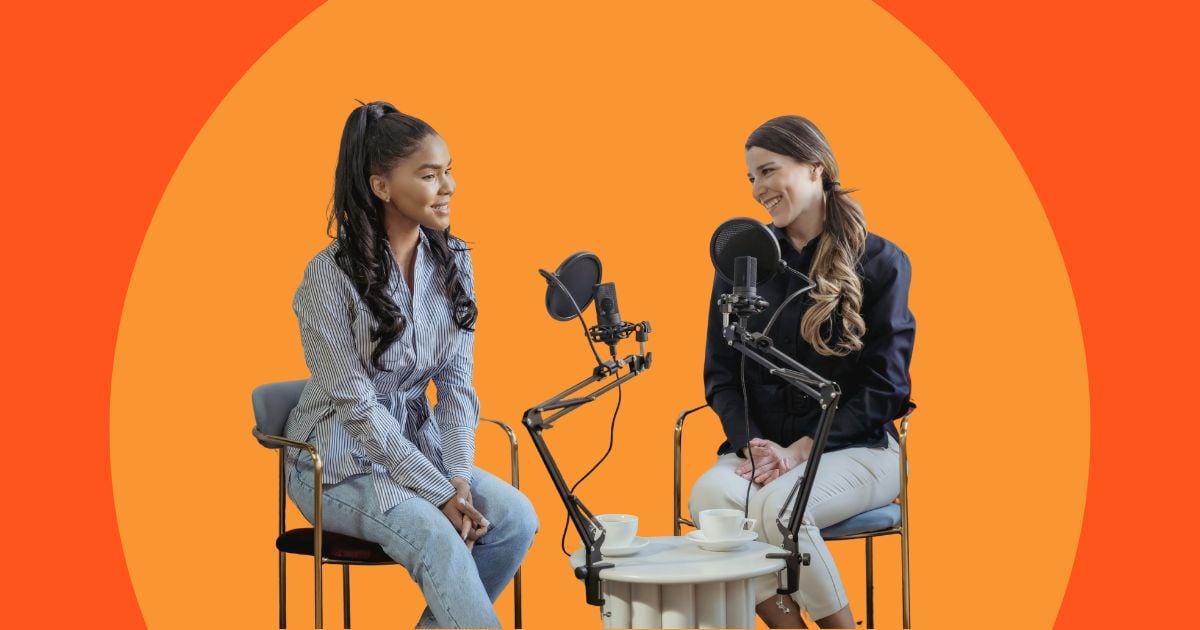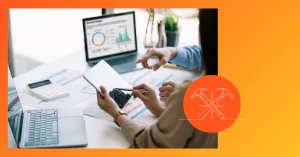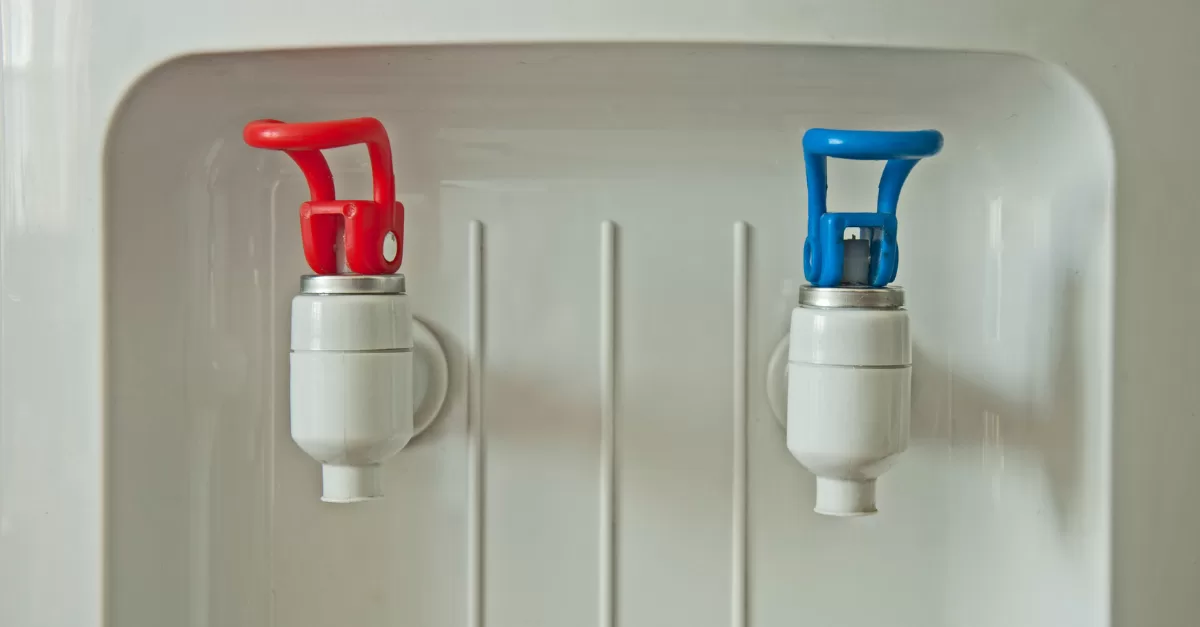While everyone has different marketing strategies, there is one thing that every marketing plan should have: the marketing funnel.
Understanding your marketing funnel is the key to identifying the best content and strategies for moving customers along in their journey.
In this post, I will break down everything you need to know about the marketing funnel, including what it represents for your business, why you need one, and how to use it to maximize your success.
Contents
- What is the marketing funnel?
- Why is the marketing funnel important?
- What are the stages of the marketing funnel?
What is the marketing funnel?
The marketing funnel represents a consumer’s journey from being unaware that you exist to becoming a customer. It’s often broken up into four different stages, but the number of stages and names of those stages vary depending on who you talk to. One of the most widely accepted sets of stages is as follows:
- Awareness
- Interest
- Desire
- Action
We’ll talk more about each of these phases later in this post.
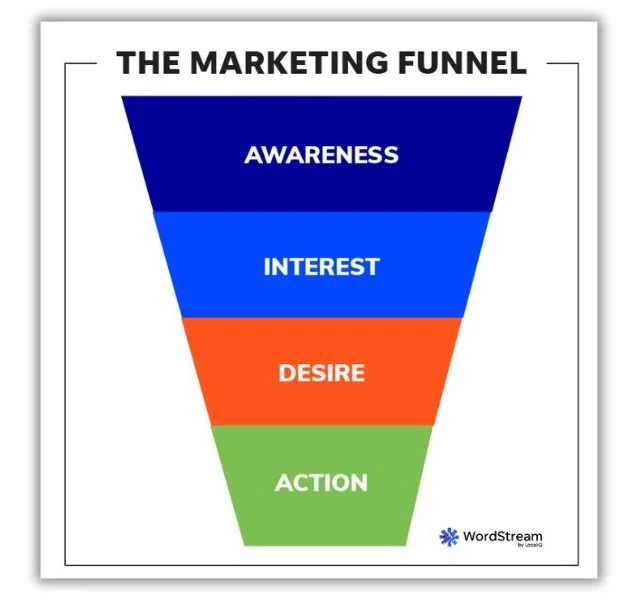
The marketing funnel is shaped like a funnel because you naturally get drop-off along the way. Not everyone who becomes aware of your business, product, or service will complete the journey to becoming a customer. The idea is to maximize that number, of course.
🛑 Want to improve every stage of your marketing funnel? Download 130+ of the Best Online Marketing Tips for Generating More Traffic, Leads, & Sales and move more people from awareness to purchase.
Why is the marketing funnel important?
You need a marketing funnel because most people are not ready to buy right away. This has always been the case to varying degrees for different industries. But it’s more true than ever because consumers have so many options now and even more tools for researching and vetting.
Let’s go over why the marketing funnel helps to account for this buying behavior.
Guides your content strategy
Because customers have different intents at each of the stages in the buying journey, the content that will be most effective at influencing them at each of those stages will be different. With a marketing funnel, you can then create a content marketing funnel so that you’re equipped to move your leads through the journey.
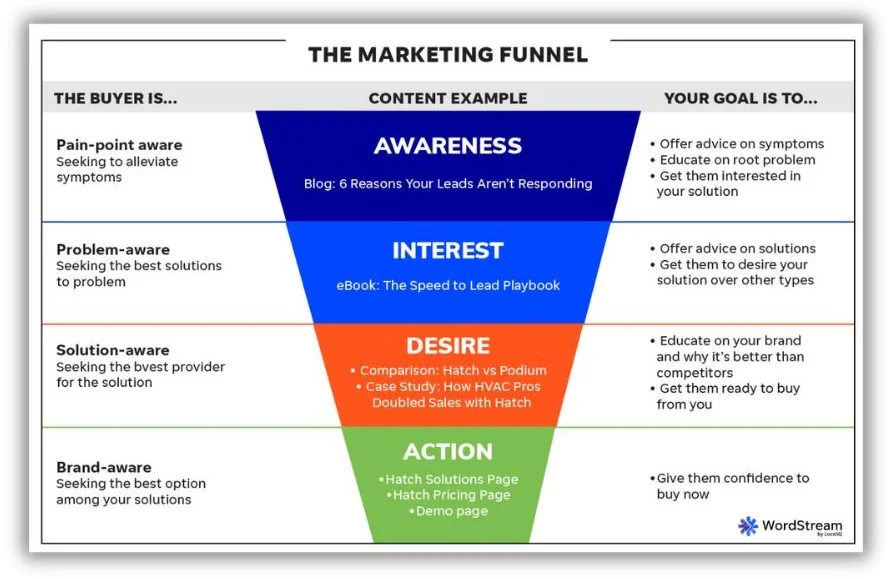
Increases conversions
A marketing funnel increases conversions because, without one, you’re asking people to make a massive leap from being aware of your brand to becoming paying customers without guidance. This rarely happens, so your conversion rates with this approach will be super low.
With a marketing funnel, you start with low-friction education. Each subsequent offer requires a little more commitment and buy-in than the last. Now, you’re increasing conversion rates at each stage, bringing more leads to the finish line.

Identifies problem areas
As we just covered, a marketing funnel takes your one conversion action (becoming a customer) and breaks it into a series of smaller conversion steps. This way, you can establish benchmark conversion rates at each stage, which will allow you to monitor and adjust accordingly. For example, if you’re generating many good-quality leads but your demo conversion rate is lacking, you may want to revisit your bottom-funnel and sales enablement content.
What are the stages of the marketing funnel?
Now that you understand the marketing funnel and why it’s important, let’s review the different stages of the funnel and the best types of marketing strategies for each stage. Note that you can produce the same content formats at any stage of the funnel: blog posts, downloadable PDFs, website pages, ads, emails, and videos—what differs is the content topic.
Awareness stage
In the awareness stage of the marketing funnel (also called “top of funnel” or “TOF”), the consumer is aware of their pain points but not aware of your business. They may not even be aware of the product or service you offer. Your goal is to get them to understand the problem behind their symptoms, to learn that there are solutions, and to become aware that you exist.
What the consumer is doing: Searching online for information about their pain points. Their keyword intent is informational, so they’re searching things like “how to increase/decrease/improve X” and “why is X happening.”
Best strategies: Offer advice, be helpful, and educate people on the root problem in this content. Use blog posts, ebooks, PR, events, newsletters, guest blogging, social ads for guides, display ads, and more.
Example: My company, Hatch, is a text automation platform for contractors. But contractors in the awareness stage aren’t looking for or interested in this. They’re interested in their symptoms: leads not responding to their calls and sales representatives burning out. So, we have a blog post on reasons your leads aren’t responding.

💡 Master the awareness stage with the free Definitive Guide to Brand Awareness: Top Strategies, Examples, & How to Measure Success.
Interest stage
In the interest stage of the marketing funnel, the customer is aware of the root problem behind their symptoms and that there are solutions to this problem—yours being one of them. Your goal is to get them interested in the solution you offer. This doesn’t necessarily mean your brand, just the type of solution.
What the consumer is doing: Searching for the best solutions to their problem. Their keyword intent is still informational, but the keywords are less about symptoms and more about solutions.
Best strategies: Provide education on the different solutions and offer content illustrating why yours is the best. Try free trials, product guides, explainer videos, buying guides, and search ads.
Example: Continuing with the Hatch example, the customer in this stage of the funnel is now aware that the problem behind the symptom of leads not responding is that they’re not reaching out fast enough. So, one of our middle-of-the-funnel pieces of content is this Speed to Lead Playbook. It’s got strategies for reaching out to leads faster, with automated texting (the solution Hatch provides) being one of those strategies.
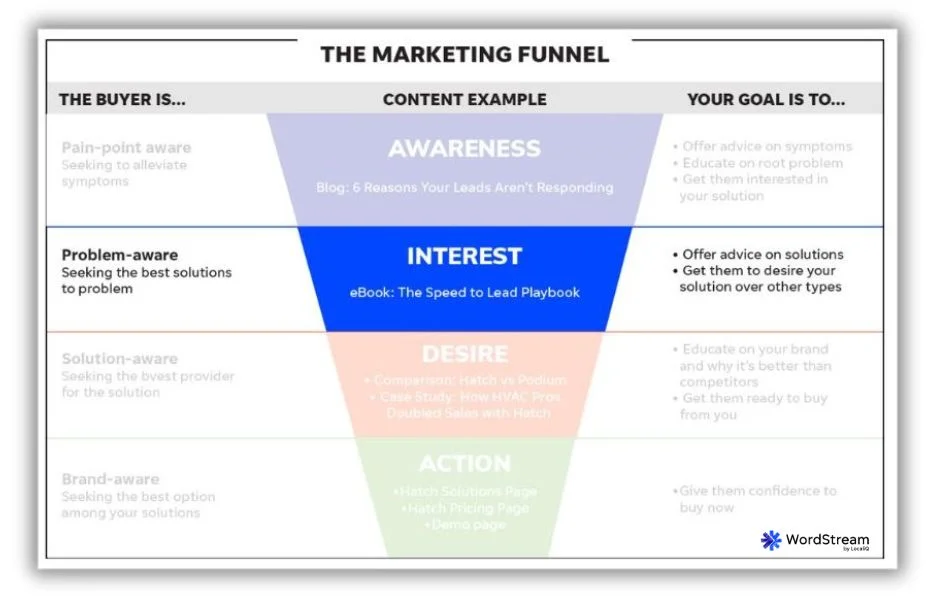
Desire stage
At the desire stage of the marketing funnel, the customer is aware of the problem and interested in your particular solution. Your goal is to convince them that your brand is the best provider of that solution.
What the consumer is doing: Evaluating your business, comparing it to competitors, asking friends about you, and reading reviews. Their keyword intent is commercial, which means they’re searching with terms like “reviews,” “compare,” “vs.,” “alternatives,” and “best.”
Best strategies: Show what makes you different from competitors. You can do this with one-pagers, comparison pages, case studies, testimonial pages, internal battle cards, and reviews. Also, focus on telling a compelling brand story that helps you to stand out.
Example: Still using our Hatch example, this post on Hatch vs. Podium examines how these two texting platforms differ and the types of businesses each one is best suited for.

Action stage
In the action stage of the marketing funnel, the customer is now confident that you are the best solution for their problem. Your goal is to get them confident enough to buy now.
What the consumer is doing: Evaluating the specific offerings you provide, comparing packages, calculating prices, and doing final vetting. Their keyword intent is navigational (they’re returning to your site and review platforms) and transactional (they want to know how/where to buy from you).
Best strategies: Show why you are worth the price, why they should act now, and appeal to their emotions. Offer promotions, use compelling calls to action, and write persuasive copy that sells.
Example: The Hatch demo page or pricing page would be action-stage pieces of content.

Maximize conversions with your marketing funnel
No matter what kind of business you have, it’s imperative that you understand what your marketing funnel looks like. Take the time to map yours out so you can increase conversion rates, create a better customer experience, and ultimately gain more customers. And if you identify problem areas, let us show you how we can help move prospects through each stage of your marketing funnel.



